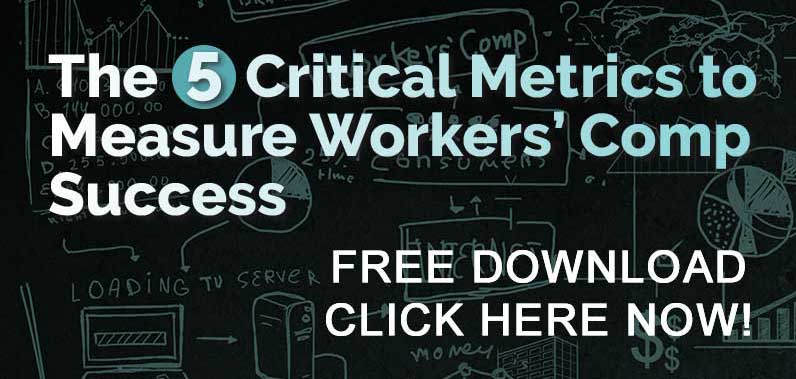 18 Key Considerations for Selecting a Third Party Administrator or Insurance Company to Control Your Workers’ Compensation Claims
18 Key Considerations for Selecting a Third Party Administrator or Insurance Company to Control Your Workers’ Compensation Claims
Selecting the best third-party administrator (TPA) is critical to controlling your workers’ compensation claims costs. Here are 18 things to consider when selecting a TPA.
Key questions to ask prospective TPAs or include in your Request for Proposal (RFP):One of the most important decisions a company makes is deciding who will handle workers’ compensation insurance claims. Depending on your insurance arrangement, an in-house insurance company or a third-party administrator can handle your claims.
- Service Team – Who is the team that will service your account? Do you want a team of dedicated adjusters, a separate unit on-site at your location or simply adjusters designated to your account?“Dedicated” adjuster team – adjusters handling only your claims; they do not handle claims for any other company. You may want a dedicated team located at your facility if your volume is high.“Designated” adjuster team – adjusters are assigned to your account and although they handle claims for other companies in addition to yours, you will always be working with the same team of adjusters.
- Industry Experience – Do they have experience in your industry?
- Regional, National or Global – Does the firm have global capabilities if your company has operations overseas?
- Internal Audit Procedures & Performance – How does the TPA ensure internal quality control and correct any problems when they arise? Do they have a proactive internal audit program where all offices must meet high quality standards? Are files from every adjuster audited?√ This is KEY! If the internal audit process is not thorough, there will be repeat problems taking a lot of your time and money to fix.
- What are the Best Practices – Do the adjusters who will handle your insurance claims achieve more than 80% of their best practices for claims handling? Are adjusters and teams given numeric scores and incentives to achieve best practices? Ask to see their scores.
- Adjuster Claim Capacity – How many claims will each insurance adjuster be handling? While this number ranges, a good rule of thumb is for each adjuster to have no more than 165 open lost time claims with less than 20 new claims each month. Best-in-class TPAs provide administrative support for adjusters allowing adjusters to focus on return to work strategy, communications with employer/employee/medical providers, and making judgments and decisions on the files. Adjuster administrative assistants perform tasks such as paying medical bills, sending requests for medical records, and filing and copying as needed. Lost-time case load for carriers and TPAs that do not provide assistance to adjusters, a lower case load will be necessary.
- Adjuster Training – Do adjusters receive ongoing training to learn new laws, to fine-tune their expertise and learn new techniques? Does the TPA also offer training to your employees, either on-line or in person? Can the TPA create training modules based on your specific needs?
- Claims Management Philosophy – Do claims managed throughout the life of the claim adhere to a Plan of Action, often referred to as a POA, with both short and long term goals? Is the focus resolution of the claim? For example, do the action plans provide specific, detailed action steps – not just, “get employee back to work.” Can the POAs be viewed on-line by you through the TPA’s risk management information system (RMIS)?
- Adjuster Resources – What type of resources can adjusters access – do they have disability guidelines, up-to-date, on-line legal libraries and other resources at their desks? Are they able to research state laws and compliance issues?
- Medical Expertise – Is there a Medical Director to provide updated
occupational illness and injury medical information to adjusters?√ This is KEY! We often forget workers’ compensation claims are medical injuries, thus medical input is crucial to the optimal handling of a claim. - Administrative Assistance – Is adequate administrative assistance provided to adjusters for routine tasks such as obtaining medical records, paying bills, setting up files, filing all forms, preparing for claims reviews, getting “one-step” prints, etc.? It frees time for the adjusters to handle more complex responsibilities, if adequate administrative assistance is available.
- Claim Specialists – Are specialists available to handle the most complex claims? Experienced adjusters with more than 10 years of experience should handle the most complex claims.
- Supervisors – Determine what role the supervisors play. If supervisors have their own case load, they may not have time to supervise the adjusters.
- Claim Reviews – Are on-site claim reviews encouraged? While telephonic and on-line review are useful, on-site reviews are “a must” and should be done at least annually. Are frequent, perhaps weekly telephone “roundtables” an option to discuss open claims or issues needing immediate input from the employer
- Three Point Contact – Do adjusters have e-triage questionnaires for the uniform development of information during three-point contact? Are the
questionnaires designed to identify problematic claim issues? Do the adjusters
have interview skills to assist them in asking all of the most revealing high
gain questions? Do adjusters have the capability to capture responses in a data
format supporting an immediate series of objectively-based recommendations based on medical evidence, for possible interventions and/or further investigations to avoid adverse claim development? Can these be customized to meet your specific needs?√ This is KEY! If critical information is not obtained immediately after the incident, the initial opportunity to control the claim may be lost. - Claim Reporting – Does the TPA have an intake service, or will you need to supplement their service with an outside firm? Do reporting options include phone, fax and on-line reporting meeting your needs?
- Medical Management – What medical management services are used? Are services well integrated, in-house services or outside services? Does medical management include Sr. Nurse Reviewers? Are there MDs for peer-to-peer discussion (employer’s doctor speaking with worker’s doctor) on a claim-by-claim basis when needed?
- Investigations – Do they have established relationships with investigators nationwide to use in all locations? If an on-scene investigation is needed, is this completed by the TPA’s own adjusters or outsourced?



 Selection of Physical Therapy Providers
Selection of Physical Therapy Providers
